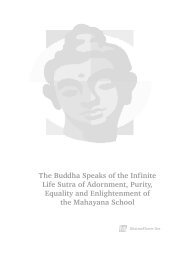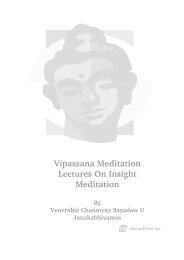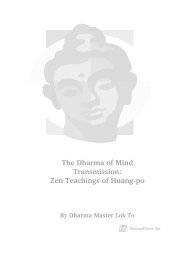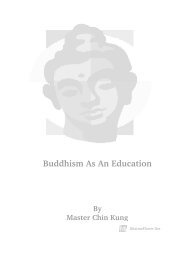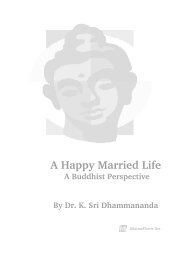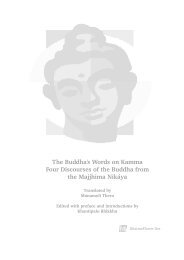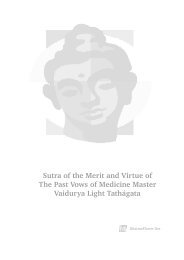THE FOUR NOBLE TRUTHS By Ajahn Sumedho - DharmaFlower.Net
THE FOUR NOBLE TRUTHS By Ajahn Sumedho - DharmaFlower.Net
THE FOUR NOBLE TRUTHS By Ajahn Sumedho - DharmaFlower.Net
You also want an ePaper? Increase the reach of your titles
YUMPU automatically turns print PDFs into web optimized ePapers that Google loves.
are doing. Sometimes, it is not until we start meditating that we beginto realise how in our lives so much fear and lack of confidence comefrom childhood experiences. I remember when I was a little boy, I hada very good friend who turned on me and rejected me. I wasdistraught for months after that. It left an indelible impression on mymind. Then I realised through meditation just how much a littleincident like that had affected my future relationships with others - Ialways had a tremendous fear of rejection. I never even thought of ituntil that particular memory kept rising up into my consciousnessduring meditation. The rational mind knows that it is ridiculous to goaround thinking about the tragedies of childhood. But if they keepcoming up into consciousness when you are middle-aged, maybe theyare trying to tell you something about assumptions that were formedwhen you were a child.When you begin to feel memories or obsessive fears coming up inmeditation, rather than becoming frustrated or upset by them, seethem as something to be accepted into consciousness so that you canlet them go. You can arrange your daily life so that you never have tolook at these things; then the conditions for them to actually arise areminimal. You can dedicate yourself to a lot of important causes andkeep busy; then these anxieties and nameless fears never becomeconscious - but what happens when you let go? The desire orobsession moves - and it moves to cessation. It ends. And then youhave the insight that there is the cessation of desire. So the thirdaspect of the Third Noble Truth is: cessation has been realised.REALISATIONThis is to be realised. The Buddha said emphatically: ‘This is a Truthto be realised here and now.’ We do not have to wait until we die tofind out if it’s all true - this teaching is for living human beings likeourselves. Each one of us has to realise it. I may tell you about it andencourage you to do it but I can’t make you realise it!Don’t think of it as something remote or beyond your ability. When wetalk about Dhamma or Truth, we say that is here and now, andsomething we can see for ourselves. We can turn to it; we can inclinetowards the Truth. We can pay attention to the way it is, here andnow, at this time and this place. That’s mindfulness - being alert andbringing attention to the way it is. Through mindfulness, weinvestigate the sense of self, this sense of me and mine: my body, myfeelings, my memories, my thoughts, my views, my opinions, myhouse, my car and so on.My tendency was self-disparagement so, for example, with thethought: ‘I am <strong>Sumedho</strong>,’ I’d think of myself in negative terms: ‘I’m nogood.’ But listen, from where does that arise and where does itcease?...or, ‘I’m really better than you, I’m more highly attained. I’ve



